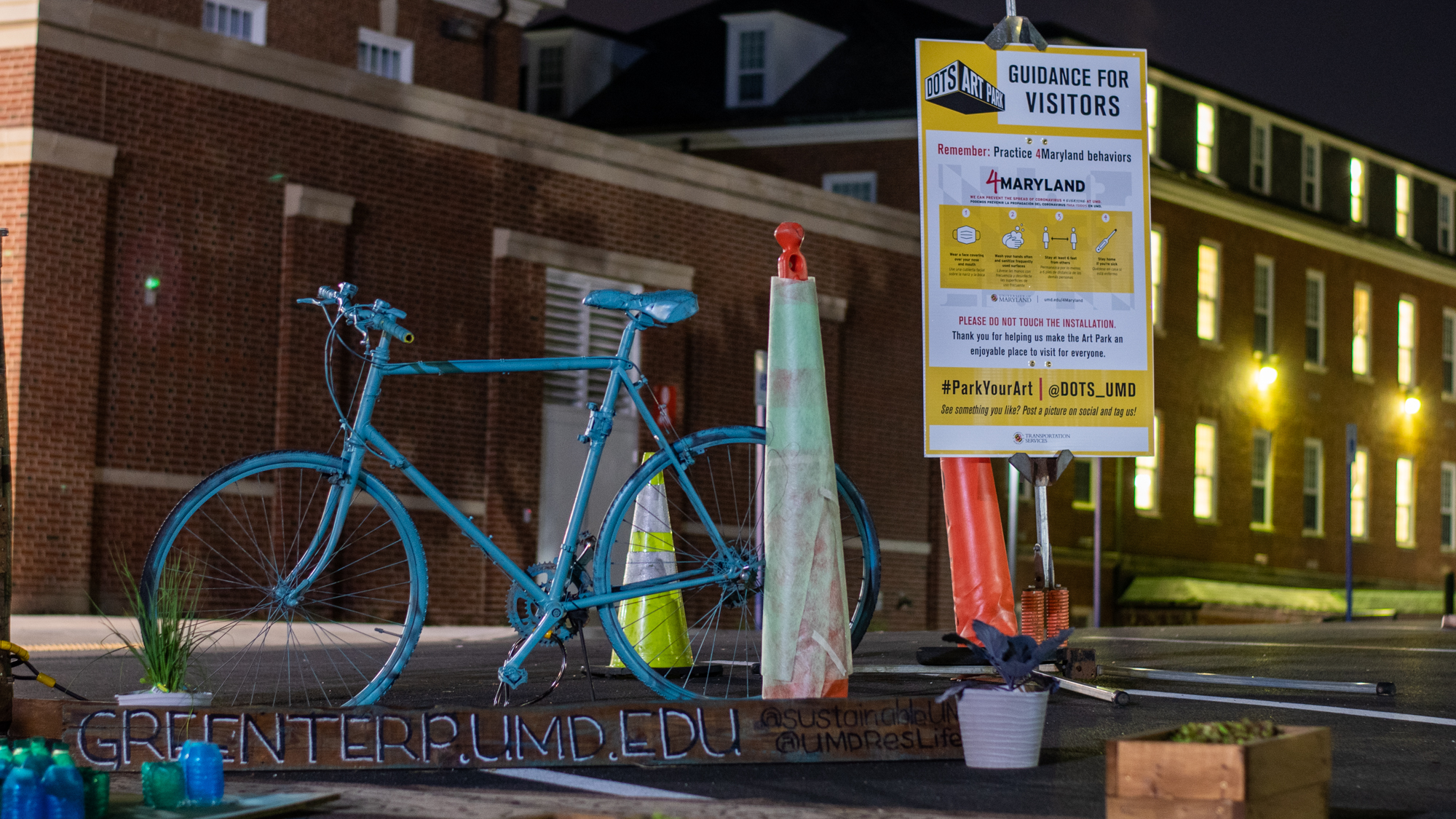For the next three and a half weeks, seven art exhibits will be on display on three campus parking lots — part of an initiative by the University of Maryland’s Department of Transportation Services.
The inspiration behind the exhibits, which are collectively called DOTS Art Park, comes from the department’s annual Park(ing) Day, which “shows how parking spaces can be reimagined for public use,” said DOTS spokesperson Cara Plewinski.
The exhibits opened on Monday and will stay up through May 11. Any university community member could apply, and all seven applicants were accepted.
When coming up with the idea, Plewinski said there were three factors DOTS needed to consider: safety, lot usage and the virtual component.
“Because campus is de-densified, we know that lots of folks aren’t going to be here to see the pieces in person, so we knew that we wanted to make Art Park come alive in a virtual space,” she said.
With the help of the Center for Geospatial Information Science, they launched a virtual story map with photos and videos of each piece for those who aren’t on the campus this semester.
[UMD art exhibit seeks to elevate voices of Black women and nonbinary people]
DOTS also gave the artists two optional prompts to follow for their projects: sustainability and university pride.
The Office of Sustainability, which created a piece called “Cultivating a SustainableUMD,” combined both prompts.
Paige Hawksworth, senior and intern for the Office of Sustainability, was part of a team of about 10 people from the sustainability office and the Department of Resident Life who worked on the art piece. They used upcycled materials to make a “park” with a bench, potted plants, rug and even banners made from old T-shirts.
“Even in a small space, we can grow food and create an inviting outdoor space for people, plants and wildlife,” she said.
With April being Earth month, Hawksworth also said the sustainability office wanted to make something people can reflect on.
[UMD student organizes Black History Month art exhibit showcasing Black joy]
“Our overall message is … to encourage awareness about sustainability and encourage people to reimagine what their small spaces could look like, reimagining how they could make their small spaces green spaces,” she said.
Amanda Nwokoro, a freshman enrolled in letters and sciences, spray-painted plastic containers to make her art piece. She wants the university community to look at her piece and reflect on their trash trends, too.
“I want them to use [my piece] as inspiration, and every time they want to throw something away, they’re gonna be a bit more conscious about what happens to it and what could come from it,” she said.
With no art experience except for high school art classes, Nwokoro said this was the most creative thing she’s done in a year. As the chair of the Residence Hall Association’s Transportation Advisory Committee, she decided to participate in the exhibits to promote DOTS.
Senior computer science and studio art major Daniel Merkowitz-Bustos describes his piece, made of bike wheels that are painted yellow and red for the university’s colors, as “playful.”
“I liked making everything in components. It’s a fairly big piece. And to move it back and forth, I built each piece individually. I liked figuring out how to do that,” he said.
When going through applications for the art park, Plewinski had to consider the fact that this art would be outdoors and ensure the exhibits wouldn’t fly away.
“Just seeing how people took the constraints that come ironically with working outside and working in a parking lot and leveraging those to create these really unique installations, is very exciting,” she said.
And Nwokoro wants students and faculty to make more sustainable choices after seeing the park.
“Something beautiful can come from something you wanted to waste,” Nwokoro said.



